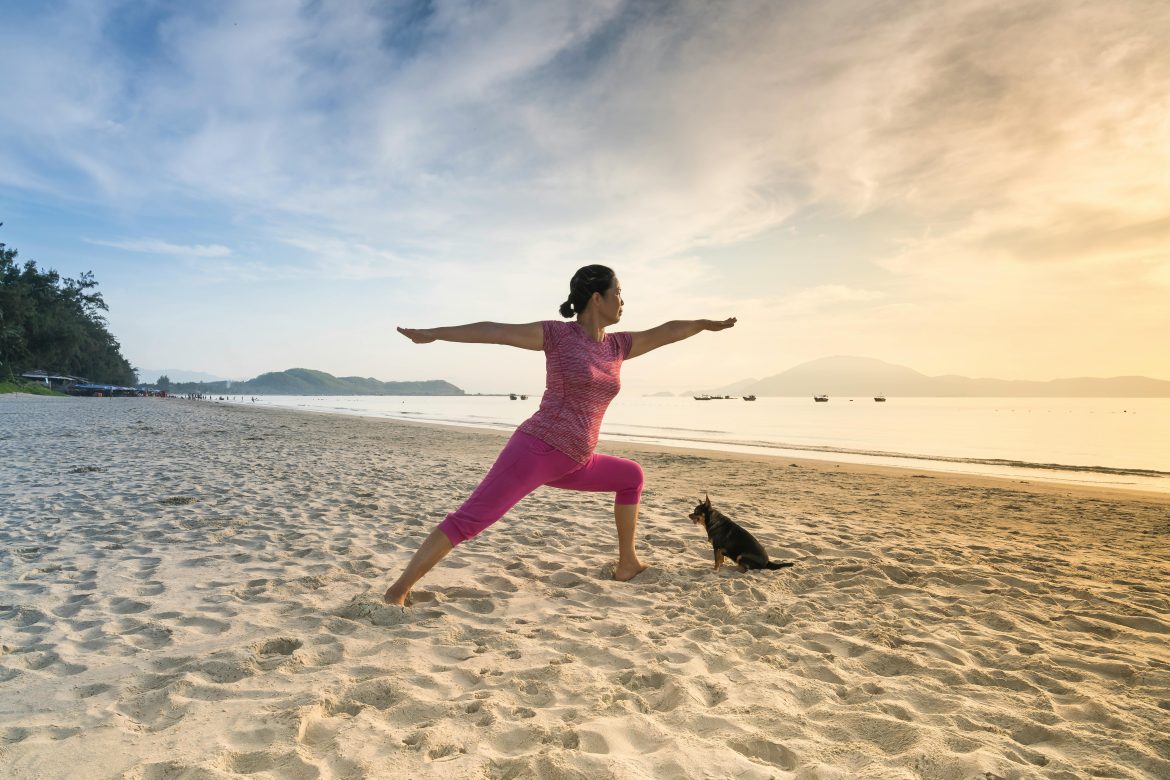Are you new to yoga and ready to start your journey? Yoga is a wonderful practice that nurtures your body, mind, and soul. It helps to relieve stress, improve posture, and boost overall well-being.
These 30 essential yoga tips for beginners will help you ease into your practice with confidence:
1. Start with a beginner’s class
It’s always best to learn from a professional. A beginner’s class will teach you the basics, help you with alignment, and ensure you’re breathing correctly. Having an instructor guide you through the process will build your confidence and prevent bad habits from forming early on.
2. Choose the right yoga mat
A good mat makes all the difference, giving you stability and comfort. Look for one that provides enough cushioning (4mm–6mm thick) for joint support while offering a firm grip.
3. Use yoga props for support
There’s no shame in using yoga props – ie. blocks, straps, or blankets—they make poses more accessible and help you ease into flexibility. Props help maintain proper alignment and can prevent strain, allowing you to gradually build strength and flexibility over time.
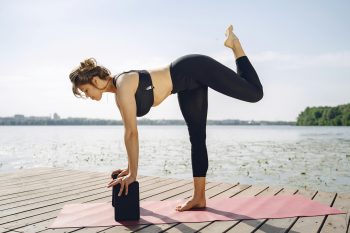
Pexels
4. Wear comfortable clothing
Go for stretchy, breathable attire that moves with you. The last thing you want is your leggings digging in or a top that rides up mid-pose! Choosing moisture-wicking materials can also keep you dry and comfortable throughout your session. Look at activewear from local companies like Burnt, designed for durability.
5. Practice on an empty stomach
Avoid eating large meals right before class to prevent discomfort. A light snack an hour before is fine if needed. Digestion can interfere with your practice, so keeping it light ensures you move with ease and avoid bloating or nausea.
6. Stay hydrated
Drink water throughout the day, but avoid chugging right before class—you don’t want a full belly while flowing through poses. Proper hydration supports muscle function and prevents cramps, keeping you feeling refreshed during your session.
ALSO SEE: What happens when you drink more water?
7. Start slow and be patient
Yoga isn’t about rushing. Take your time, ease into poses, and let your body adjust at its own pace. Building flexibility and strength happens over time, so focus on gradual progress rather than trying to perfect every pose right away.
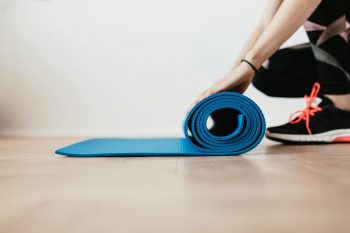
Pexels
8. Listen to your body
If a pose doesn’t feel right, don’t force it. Modify when needed and know that everyone’s flexibility and strength are different. Pushing too hard can lead to injuries, so always honour your personal limits and adjust accordingly.
9. Focus on your breathing
Your breath is your guide. Deep, steady breaths will help you stay present and move with ease. Practising breath control (pranayama) enhances relaxation, increases oxygen flow, and helps you connect with your practice on a deeper level.
10. Maintain a neutral spine
Good posture is key to avoiding injuries. Keep your spine long and aligned in all poses. Proper alignment supports balance and core engagement, preventing unnecessary strain on your back and neck.
11. Don’t skip warm-ups
A few gentle stretches and movements before diving into poses will prepare your body and reduce the risk of injury. Warming up gradually increases blood flow to the muscles, allowing you to move more fluidly and comfortably.
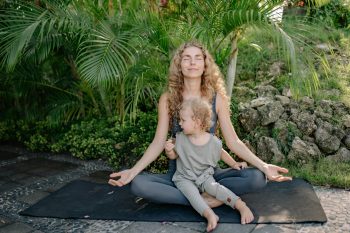
Pexels
12. Be consistent
The more you practice, the better you’ll feel. A few sessions a week can make a big difference over time. Developing a regular routine helps build muscle memory, making movements feel more natural and enjoyable.
13. Avoid comparing yourself to others
Your journey is yours alone. Don’t worry if someone next to you is more flexible—focus on your own progress. Every body is different, and celebrating small improvements will keep you motivated and encouraged.
ALSO SEE: 7 tips to beat the curse of comparison
14. Engage your core
A strong core supports every movement. Activating it will improve your balance and stability. Engaging your abdominal muscles helps protect your lower back and enhances control over your poses.
ALSO SEE: 7 Easy exercises to strengthen your core at home
15. Work on your balance
Standing poses like Tree Pose or Warrior III are great for building steadiness—just don’t be afraid to wobble! Practising balance regularly strengthens stabilising muscles and improves coordination, both on and off the mat.

Pexels
16. Explore different yoga styles
From slow and meditative Yin to fast-paced Vinyasa, try different styles to find what resonates with you. Each type of yoga offers unique benefits, so experimenting with various styles will help you discover what best suits your needs and goals.
17. Find a comfortable space
Whether at home or in a studio, ensure your practice space is peaceful, clutter-free, and inviting. A calm environment allows for better focus and relaxation, enhancing the overall experience.
18. Accept help from your instructor
Teachers are there to guide you. Accept adjustments and feedback—they’ll help improve your practice. Instructors can offer personalised insights that help refine your technique and deepen your understanding of yoga.
19. Laugh off mistakes
Falling out of poses? Losing balance? Releasing a bit of wind? It happens to everyone! Have fun with it and keep going. A lighthearted approach makes the learning process more enjoyable and removes unnecessary pressure.
20. Practice Sun Salutations
This classic sequence is an amazing warm-up that strengthens and stretches your entire body. Sun Salutations also help build heat in the body, preparing you for deeper stretches and more advanced postures.
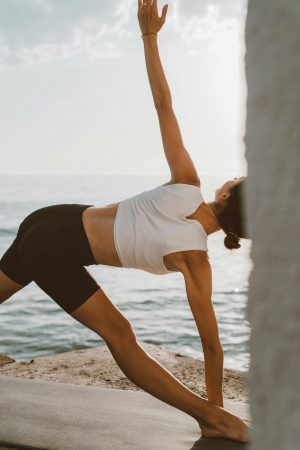
Pexels
21. Complement yoga with other exercises
Strength training and cardio can enhance your endurance, making yoga even more beneficial. Cross-training provides balance, preventing muscle imbalances and improving overall fitness.
ALSO SEE: 7 ways to add strength training into your daily life
22. Stretch outside of yoga
Daily stretching keeps your muscles flexible and helps you ease into poses with more comfort. Simple stretches throughout the day prevent stiffness and improve mobility over time.
23. Set an intention for each practice
Decide what you want to focus on—whether it’s mindfulness, strength, or simply unwinding from a stressful day. Setting an intention adds purpose to your practice, making it more meaningful and fulfilling.
24. Avoid holding your breath
Always maintain steady, controlled breathing as you move through poses. Holding your breath can create tension and make it harder to relax into the postures.
25. Consider a yoga retreat
A retreat can be a great way to deepen your practice, immerse yourself in relaxation, and learn from experienced instructors in a peaceful setting.

Pexels
26. Find an instructor who inspires you
A good teacher can make all the difference. Find someone whose energy, teaching style, and philosophy align with your goals.
27. Practice gratitude
Take a moment at the end of your practice to appreciate your progress, your body, and the time you’ve dedicated to self-care.
28. Take your practice home
Not into studio classes? Online videos, apps, or self-guided sessions make it easy to practice anywhere at your own pace.
29. Savour shavasana
Don’t rush out of this final relaxation pose—it’s a chance for your body and mind to integrate the benefits of your practice fully.
30. Do it with a partner
Attending a yoga class is always more fun with a friend! Whether you’re headed to a group session or simply practicing at home, rope in your partner, kids or friends to do it with you. The support goes a long way, and you’ll get lots of laughs!
ALSO SEE:
Feature Image: Pexels

